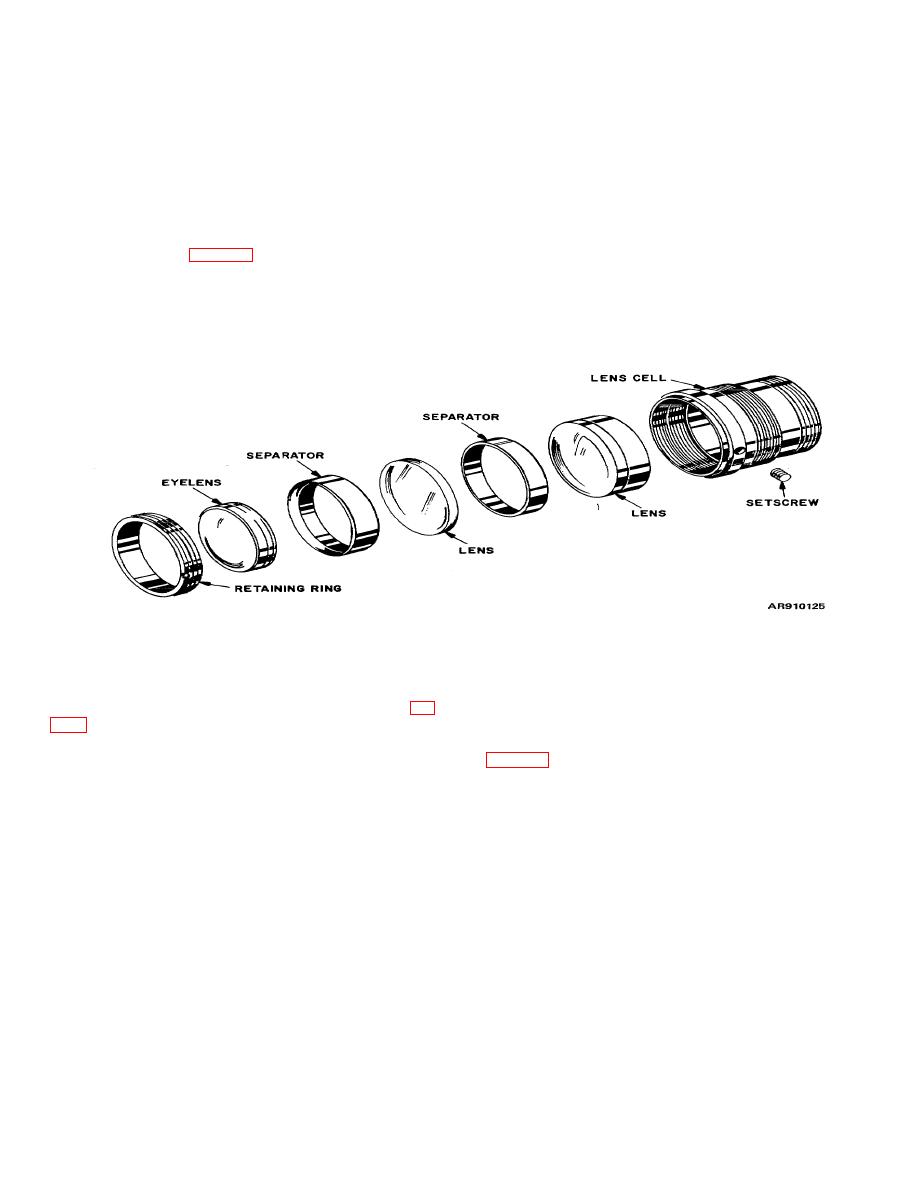 |
|||
|
|
|||
|
Page Title:
Section III. GENERAL CONSTRUCTION FEATURES |
|
||
| ||||||||||
|
|
 TM 9-258
pounds from getting on the coated surfaces of lenses.
d. Every precaution should be taken to prevent
The removal of such compounds undoubtedly would
inexperienced personnel from misunderstanding the
result in injury to the coated surfaces.
function of the coating and attempting to remove it.
Section III. GENERAL CONSTRUCTION FEATURES
thin edge of the cell (burnishing). A setscrew locks the
4-17.
Lens Cells, Separators, Lens Retaining
retaining ring in position in the lens cell. When two or
Rings, and Adapters.
more lenses are mounted in a cell, the different elements
are maintaintained at the proper distance from one
frame made of metal, plactic, or hard rubber which holds
another by spacers of separators. The cell mounting
a lens or a number of lenses in the proper position within
permits the entire assembly to be handled and mounted
an optical instrument. The lens usually is secured into
as a unit.
the cell by a lens retaining ring or by turning over a
Figure 4-35. Lens cell, separators, lenses, and retaining ring.
b. Separators or spacers are smooth or threaded
lens or prism. When the center of a lens is moved it can
be made to cause the light to be bent in a different
tubular sections which separate or space the elements of
direction. In cases where extreme exactness is required,
a lens system in the proper relation with one another (fig
proper adjustment of the center of the objective is
accomplishing by mounting it in a pair of eccentric rings
of lenses snugly.
c. Lens retaining rings are generally threaded
ring, or by rotating the outer ring in the lens cell, the axis
about their outer diameters and are screwed in over
of the objective may be moved to any point in a relatively
lenses to secure the lenses to their cells.
large area. When properly positioned, the rings may be
d. Adapters may be used to mount an element or
locked in position. Skill is required to set the rings in the
part of smaller diameter into a part of the instrument
proper manner.
body which is of larger diameter.
4-18. Centering Devices.
a. Light always bends toward the thickest part of a
4-35
|
|
Privacy Statement - Press Release - Copyright Information. - Contact Us |